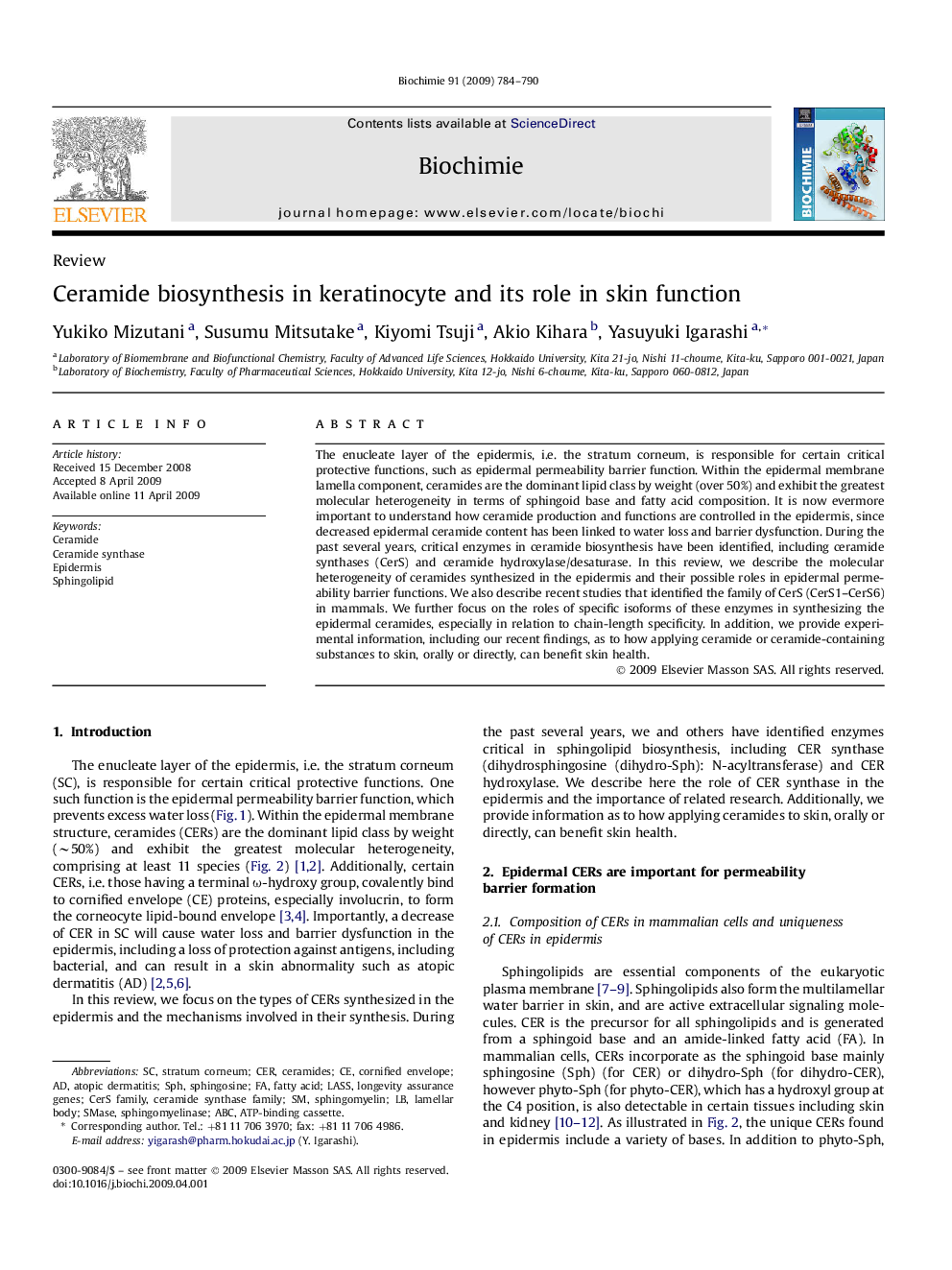| Article ID | Journal | Published Year | Pages | File Type |
|---|---|---|---|---|
| 1953066 | Biochimie | 2009 | 7 Pages |
The enucleate layer of the epidermis, i.e. the stratum corneum, is responsible for certain critical protective functions, such as epidermal permeability barrier function. Within the epidermal membrane lamella component, ceramides are the dominant lipid class by weight (over 50%) and exhibit the greatest molecular heterogeneity in terms of sphingoid base and fatty acid composition. It is now evermore important to understand how ceramide production and functions are controlled in the epidermis, since decreased epidermal ceramide content has been linked to water loss and barrier dysfunction. During the past several years, critical enzymes in ceramide biosynthesis have been identified, including ceramide synthases (CerS) and ceramide hydroxylase/desaturase. In this review, we describe the molecular heterogeneity of ceramides synthesized in the epidermis and their possible roles in epidermal permeability barrier functions. We also describe recent studies that identified the family of CerS (CerS1–CerS6) in mammals. We further focus on the roles of specific isoforms of these enzymes in synthesizing the epidermal ceramides, especially in relation to chain-length specificity. In addition, we provide experimental information, including our recent findings, as to how applying ceramide or ceramide-containing substances to skin, orally or directly, can benefit skin health.
